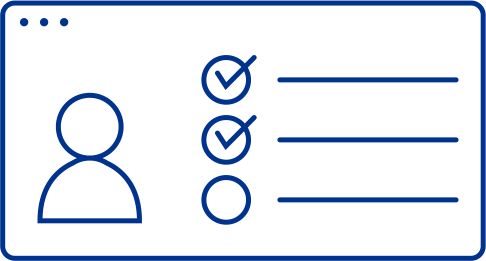Romania's entry into the Schengen area, starting from 31 March this year, brings not only the elimination of checks at air and maritime borders but also new, tighter deadlines for declarations/notifications for employers and foreign employees, as well as new provisions on visas for foreign citizens in contractual relationships with local organizations. Against the backdrop of a labor force that has decreased by one million people over the last ten years (8.2 million at the end of 2022) and a deficit of around 140,000 workers, foreign hires represent a significant resource. For the year 2023, the quota of 100,000 foreign workers from outside the European Union/European Economic Area/Switzerland generated considerable revenue for the state budget - approximately 230 million euros in taxes and contributions (including social security and health insurance contributions), as shown by the data from the Employers' Association of Labor Importers. But let's see what are the most important facts that employing companies should know.
With the accession of Romania and Bulgaria, the Schengen area will encompass all EU and EEA countries, except for Cyprus, Ireland, and the United Kingdom (non-EU country, after Brexit). Schengen became operational in 1995, and its goal was to reduce and even eliminate checks at border crossing points as well as to facilitate movement within the EU. To update the legislation and implement the changes required by Romania's air and maritime accession to the Schengen area, the Government adopted an Emergency Ordinance, amending and supplementing several pieces of legislation affecting foreigners.
What changes?
Specifically, the Ordinance modifies several pieces of legislation and updates the provisions on the regime of foreigners in Romania, in terms of granting/extending the validity of visas. In accordance with Decision (EU) 2024/210, the Ordinance updates the definition of "illegal stay," in line with the provisions of the Schengen Borders Code, and also provides measures on controlling illegal migration in the context of the contingent of foreign workers.
Consequently, from the perspective of foreign citizens, Romania will start issuing uniform Schengen visas, as well as national visas. In practice, national visas issued until March 31 - those for business, tourism, or visits, will be replaced with uniform C-type visas. The holder of these types of visa is entitled to spend 90 days in any 180-day period in the territory of any Schengen member state. According to European and Romanian authorities, the calculation of the 180-day period will also take into account the days spent on Romanian territory. While in the past, foreign citizens holding a Schengen visa could come to Romania and spend 90 days in our country, then leave for the Schengen area, where they could spend another 90 days over another six months, with Romania's partial accession to Schengen, the time spent in our country will be counted in the total 90-day period. Employers will need to inform foreign citizens of these changes, and ask them to keep records, taking into account that if they arrive in Romania on a late flight - say at 11 p.m., and the day ends at midnight, the time spent in Romania will count as a day spent in the Schengen area and be deducted from the total of 90 days.
Romania will also issue airport transit visas, which are considered Schengen visas and are identified with the symbol A, valid in the international transit zones in one or more airports in the Schengen area, as well as long-stay visas, type D, which remain national visas, such as those for employment, secondment, or family reunification.
We suggest that companies should monitor the travel of foreign employees, and specialists from HR departments or mobility departments will need to take into account the existence of new procedures to follow in terms of visas, as well as periods of stay.
Very short declaration deadlines
From three to ten days: these are the periods available to employers or foreigners to declare or notify any changes in contractual relationships. Thus, employers have only five working days, compared to ten days previously, to declare the termination or suspension of legal relationships with a foreigner, modification or termination of an employment contract concluded with a foreigner or, as appropriate, the termination of a secondment or conclusion/termination of an employment contract with foreigners who are working or commencement/termination of secondment in Romania (for foreigners exempted from the requirement to have a work permit).
Foreigners, on the other hand, have only three days to notify the General Inspectorate for Immigration of any changes related to their employment. Any change in personal situation, especially a change of name; citizenship; domicile or residence; conclusion, dissolution, or annulment of marriage; birth of a child; or death of a family member on Romanian territory must be communicated to the General Inspectorate for Immigration within 10 days. The same deadline applies in the case of extending the validity of or changing a document for crossing the state border. However, the theft or loss of border crossing documents must be reported within a maximum of 48 hours.
Strict regulations on labor relations
The same Ordinance recently adopted by the Government states that foreigners entering the country for the purpose of employment are extended the right of temporary stay only if they present a full-time employment contract, concluded within 15 working days from entering Romania or, as appropriate, from obtaining a new work permit, registered in the general register of employees, which shows that the salary is at least at the level of the minimum gross basic national salary. For highly qualified workers, the salary must be at least at the level of the average national gross wage. The provisions on the deadline for conclusion of an employment contract do not apply if the non-conclusion of the employment contract is the employer's fault.
Another new element that will certainly help companies is the assignment of a personal numeric code to each foreigner for whom work permits or secondment notices have been issued, whose right of temporary stay has been extended or who has been granted long-term residence rights. The personal numeric code will be assigned by the General Inspectorate for Immigration, and is entered in the residence permit or in the work or secondment notice. Thus, while until now companies had to carefully calculate immigration and declaration deadlines, and not infrequently were unable to declare the foreigner because the personal numeric code had not been assigned, now organizations will be able to comply more easily.
The new legislation also contains new requirements for employers, who will have to conclude the employment contract within 15 working days from the foreigner's entry into Romania or, as appropriate, from obtaining the new work permit, in the case of a long-stay visa for employment. Employers which do not respect this deadline will be fined amounts between 5,000 and 10,000 lei. Failure by the employer to comply is not a criminal offense if the non-conclusion of the employment contract is the foreigner's fault. The fine will come into force 30 days after the ordinance was published in the Official Journal of Romania, i.e. on 21 April 2024.
The Government has also modified the special conditions for issuing an employment notice for permanent workers. The legislation now states additionally that the employer must have been active in the field for which the employment notice is requested for a minimum of 1 year. According to the authorities, "the proposed measure has a character of screening employers who request the issuance of employment notices, discouraging those individuals who establish commercial companies for the purpose of using them in the legal migration process, but with the real intention of facilitating illegal migration."
Considering the numerous changes that have occurred and the speed with which they must be implemented, we recommend that different departments within organizations should make sure they have effective channels of communication so that deadlines can be met. We have often encountered situations where the department handling document preparation was different from that making decisions on hiring/secondment/dismissal, so piecing together information took a few days. It is consequently important for everyone to be well informed about the new provisions, so that changes can be managed as easily as possible.

